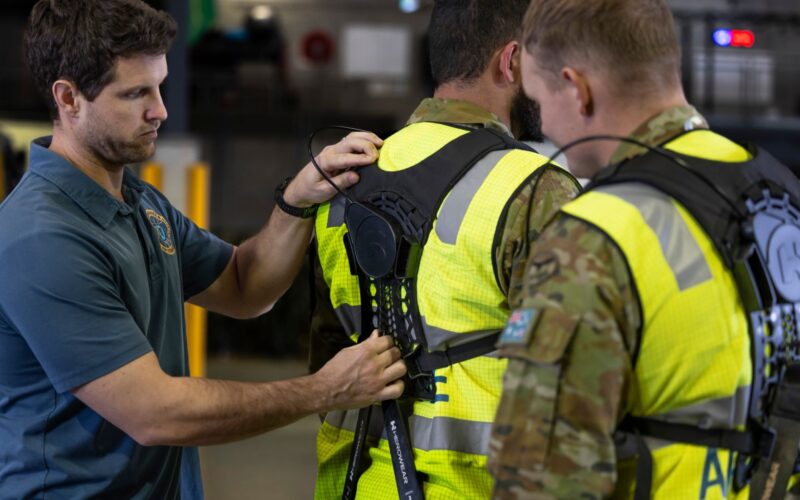The Royal Australian Air Force (RAAF) will start using back-assist exosuits to assist personnel in roles that involve regular, heavy lifting.
Described by the RAAF as “once the stuff of sci-fi films”, the exosuit, called Apex 2, is lightweight and designed to reduce fatigue and muscle strain by 40%. It works with the body’s natural movements, using elastic bands that stretch as muscles extend and recoil as they contract, to assist bending and reduce strain.
The exosuits are constructed with abrasion-resistant fabrics, engineering-grade polymers and aircraft-grade aluminum.
“My teams are building pallets, lifting passenger bags, and regularly twisting their bodies to manipulate cargo, which puts a significant strain on their bodies,” Squadron Leader Jessica Sutherland of 23 Squadron said in a statement.
Sutherland oversaw rollout of the exosuits to her unit, which faced workforce challenges due to injury. Alongside unit strength and conditioning programs, Sutherland said the exosuits have the potential to reduce injuries common in her unit.
To ensure that the RAAF met the Australian regulatory framework for work health and safety, training was developed and implemented by Combat Support Group (CSG).
The training program covered operational mechanics, ergonomic benefits and safety protocols, ensuring all users could maximize the exosuit’s potential while adhering to safety standards.
“It helps you maintain correct technique and posture, and prevents fatigue, stopping your legs from burning out as quickly,” Squadron Leader Sean Lacy from CSG said, adding that the exosuit is not a substitute for strength and endurance training.
“Alongside introducing the exosuit, there is still a need for initiatives focused on strength, conditioning and risk management training,” Lacy said.
Lacey spent his first 15 years in the Air Force as an airframe fitter, during which he sustained a back injury. He said he hoped the Apex 2 exosuit is implemented across the Air Force before his career ends, with the aim of preventing similar injuries.
In 2014, Japan’s Haneda Airport (HND) tried the use of a wearable hybrid assisted limb for baggage handlers and cargo loaders at the domestic terminal.
Airport employees wore three kilogram robotic suits around their waists to help with lifting heavy objects. The suits worked by sending bioelectric signals from the brain to the muscles, prompting the machine to support the weight being lifted and reducing back stress.
The suit is battery-powered and a full charge can last for about three hours.

